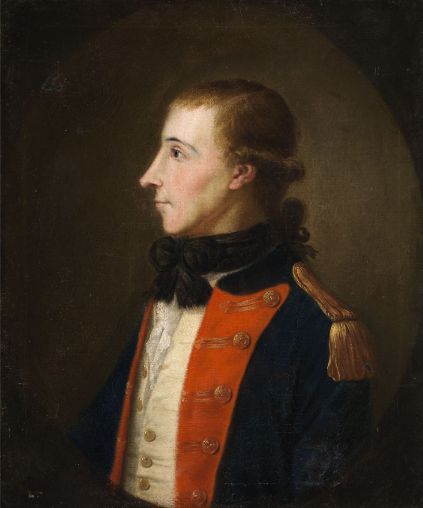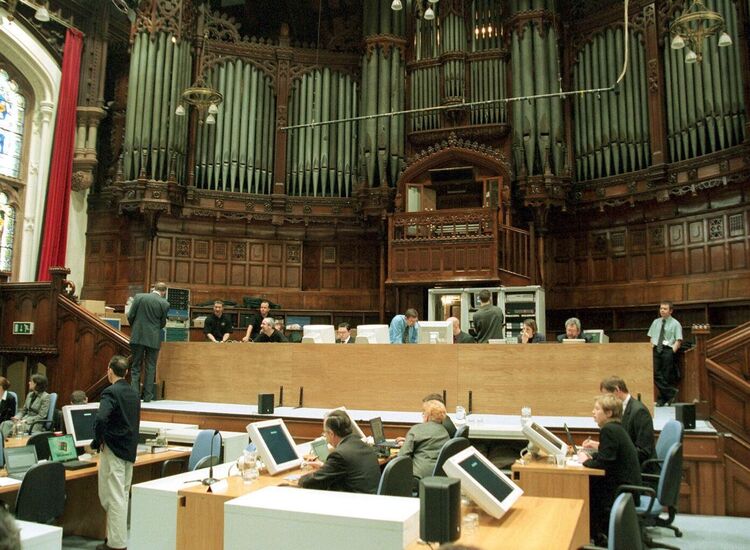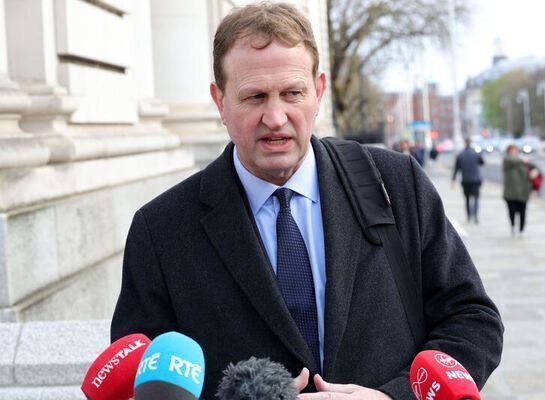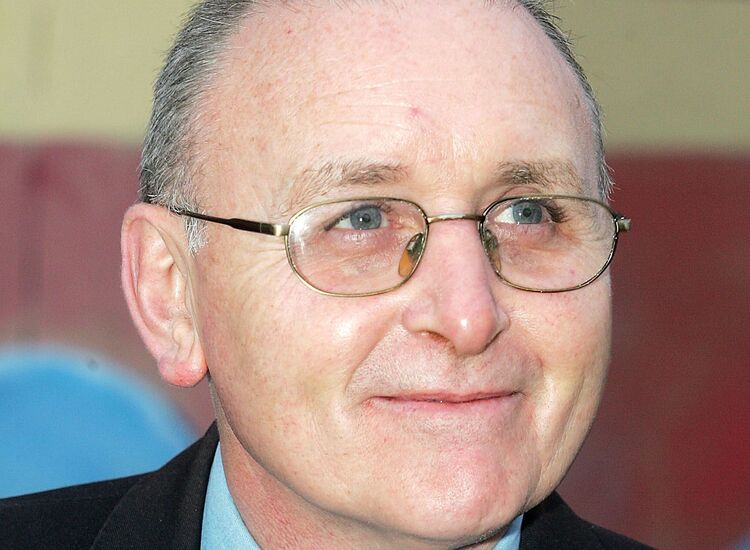"Up the Republic, they raise their battle cry,
"Pearse and McDermott will pray for you on high"
From “Legion of the Rearguard” – a Republican Civil War song
The goal of an Irish Republic was central to the debates and arguments surrounding the Treaty negotiations that were headed in the Irish delegation by Arthur Griffith and Michael Collins while the British Prime Minister, David Lloyd George, led his team on the opposing side.
The proposals that emerged offered dominion status, the same political freedom as applied in Canada and Australia, to a new Irish Free State. This fell far short of the 32-county republic sought by the Irish delegation.
Michael Collins.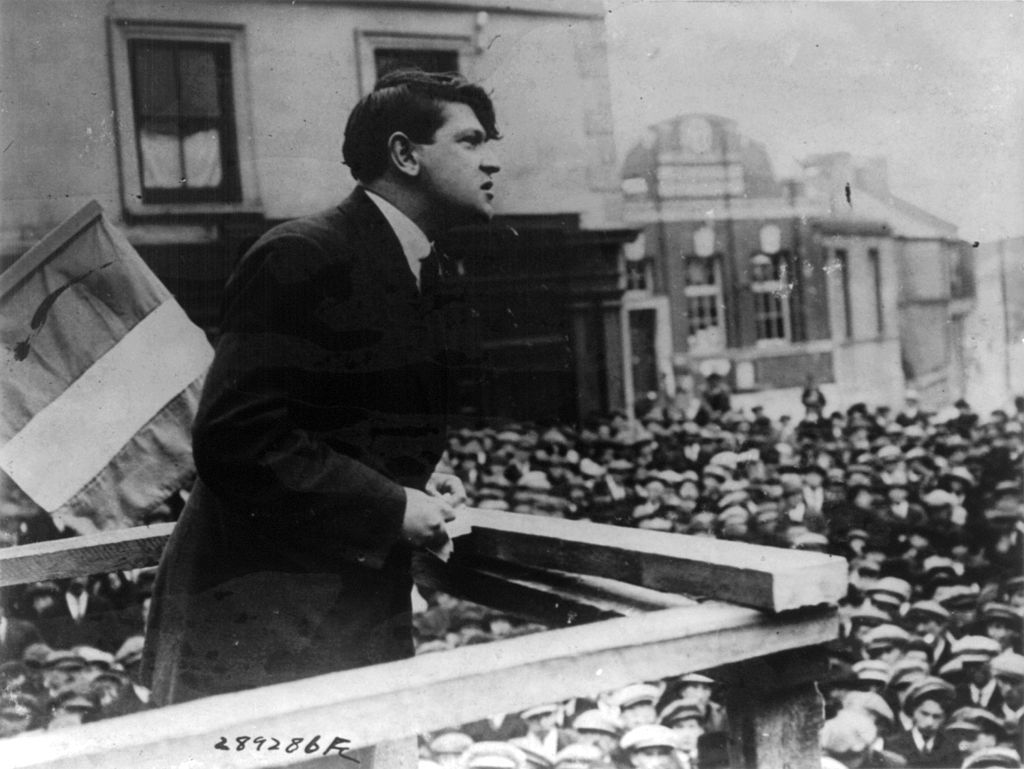
For some, dominion status was a major achievement, involving the departure of all British forces from the new 26-county state and the end of foreign rule with all its entanglements.
It offered far greater political freedom than any of the Home Rule Bills proposed in the British parliament over the previous thirty years by distinguished Irish leaders, Charles Stewart Parnell and John Redmond.
After the 1914 Home Rule bill, allowing a very limited degree of local government in Dublin passed in Westminster, Mr. Redmond got a huge celebratory welcome in Dublin, including praise from Patrick Pearse and the legendary Fenian Diarmuid O’Donovan Rossa, both of whom saw the Bill as a significant move in the right direction.
Edward Carson and other loyalist leaders in the North said no to any deal that would involve a Southern parliament legislating for their constituents. The British leaders bowed to their pressure, leaving no doubt about their disdain for Irish nationalists, and in December 1920 a new parliament was inaugurated in Belfast to accommodate unionist demands.
There was no consultation with any representative of the dissenting nationalist minority before the passage of what they imperiously titled The Government of Ireland Act.
It was openly promoted as a Protestant parliament for a Protestant people. The guiding principle in the new entity in Stormont entailed keeping the Taigs, the Catholic community, in subjection. Shakespeare’s words come to mind: “Things bad begun make strong themselves by ill.”
Eamon de Valera.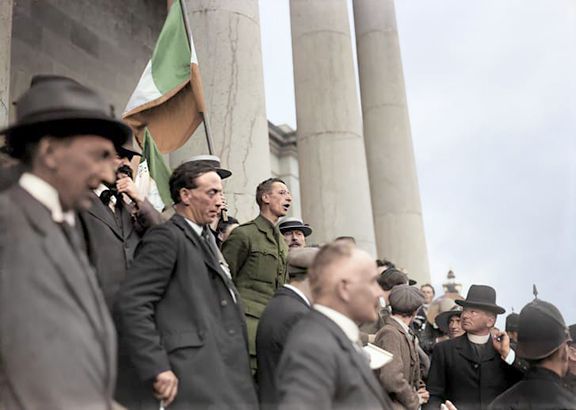
Meanwhile, a few years before the creation of Stormont, Patrick Pearse, Tom Clarke, James Connolly, and their comrades in the Irish Republican Brotherhood, always dubious about British intentions, declared for an Irish Republic, and they showed their seriousness by leading a doomed insurrection in Dublin in Easter week 1916.
After the execution of the leaders, many of them writers and poets, the Irish people turned to a revitalized Sinn Féin, now demanding complete independence from Great Britain, and that party won a massive victory in the Westminster general election in November 1918.
In January 1919, the 73 elected Sinn Féin men and women assembled in the Mansion House in Dublin refusing to take their seats in Westminster. They elected Eamon de Valera, a hero of the 1916 revolt, as president and proclaimed themselves the duly elected members of an independent parliament – a putative republic.
They showed their seriousness by launching in August 1919 a National Loan with the bonds guaranteed by the new Dáil. Michael Collins headed up this major project. A month after it started Lloyd George proscribed the new parliament and tried to confiscate the money collected to finance it. Collins ensured that none of the 350,000 pounds raised was taken by the authorities and that the sources of all the funds were fully protected.
Michael Collins, the top military leader during the War of Independence, argued that the deal was not a final settlement. It provided, in his words, “the freedom to achieve freedom.”
The War of Independence followed, lasting most of three years, between British forces and the Irish Republican Army (IRA) who, while far inferior in armaments and training, succeeded by using guerrilla hit-and-run tactics to fight their enemy to a standstill, embarrassing the leaders in London who had recently led the triumphant allied armies to victory in the Great War.
The members of the IRA were highly motivated to fight a regime that oppressed their people for hundreds of years. Every member of the IRA took an oath to an Irish Republic which highlighted their goal of an All-Ireland democratic parliament completely separate from Britain, a monarchy led by titled aristocrats.
A military truce was agreed between leaders on both sides in July 1921, and in the fall of that year, negotiations began in London to sort out a conflict that had become a serious embarrassment for the British government. This was especially the case in their dealings with Washington where Irish Americans had developed strong political clout and were regularly expressing outrage at the perverse behavior of the Black and Tans and Auxiliaries, part of the police force.
The partition of the country in 1920 took place during the War of Independence but Irish Republicans showed no willingness to battle with Northern loyalists, partly because they had over 100,000 armed men to defend their position within the United Kingdom, but also because an internecine war with Protestant militias ran completely counter to the philosophy of the founder of Irish Republicanism, a Belfast Presbyterian patriot, Theobald Wolfe Tone.
Republican leaders, including de Valera, rationalized the unionist position as economically unsustainable, stressing that the division of a small island wouldn’t last. Partition was barely mentioned in the heated Dáil debates that took place in December 1921 until the vote was taken to narrowly accept the terms of the Treaty on January 7th, 1922.
Opponents of the agreement focused their antagonism on the fact that dominion status was a long way from a republic. A majority of IRA members rejected the deal because it involved members of the new Dublin parliament taking an oath of allegiance to the English monarch. The royals would have no power over any legislation, but the act of recognizing a symbolic overlordship of a foreign king or queen was repugnant to many republicans.
Michael Collins, the top military leader during the War of Independence, argued that the deal was not a final settlement. It provided, in his words, “the freedom to achieve freedom.”
That powerful argument barely carried the fateful vote in favor of acceptance but, of course, it didn’t end the mayhem as some on the losing side argued that their solemn allegiance to the Republic exempted them from a core feature of democracy, that the majority rules.
The story of the tragic civil war that followed included many paeans to the lost Republic, but the people had other priorities as demonstrated in the June general election in 1922, when pro-treaty candidates got twice as many votes as anti-treatyites.
Interestingly, when de Valera, who was a main leader of those opposing the treaty, took over as Irish Prime Minister in 1932, a position he held for sixteen years, he chose not to declare a republic as many anticipated he would. That announcement was made in 1948 by John A Costello, who led an inter-party government of mostly pro-treaty groups.
Gerry O'Shea blogs at wemustbetalking.com

